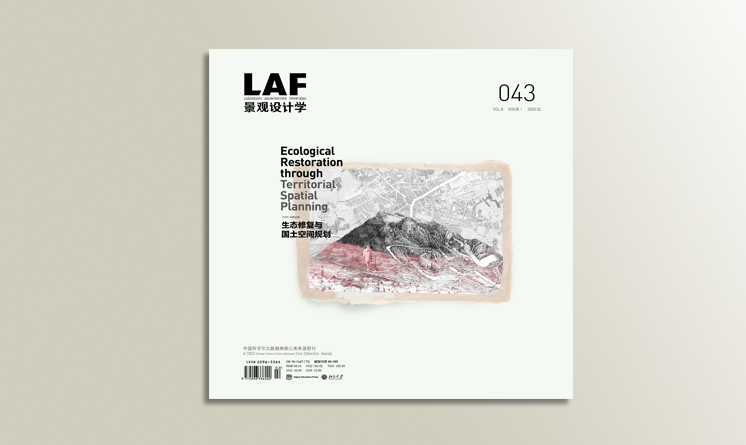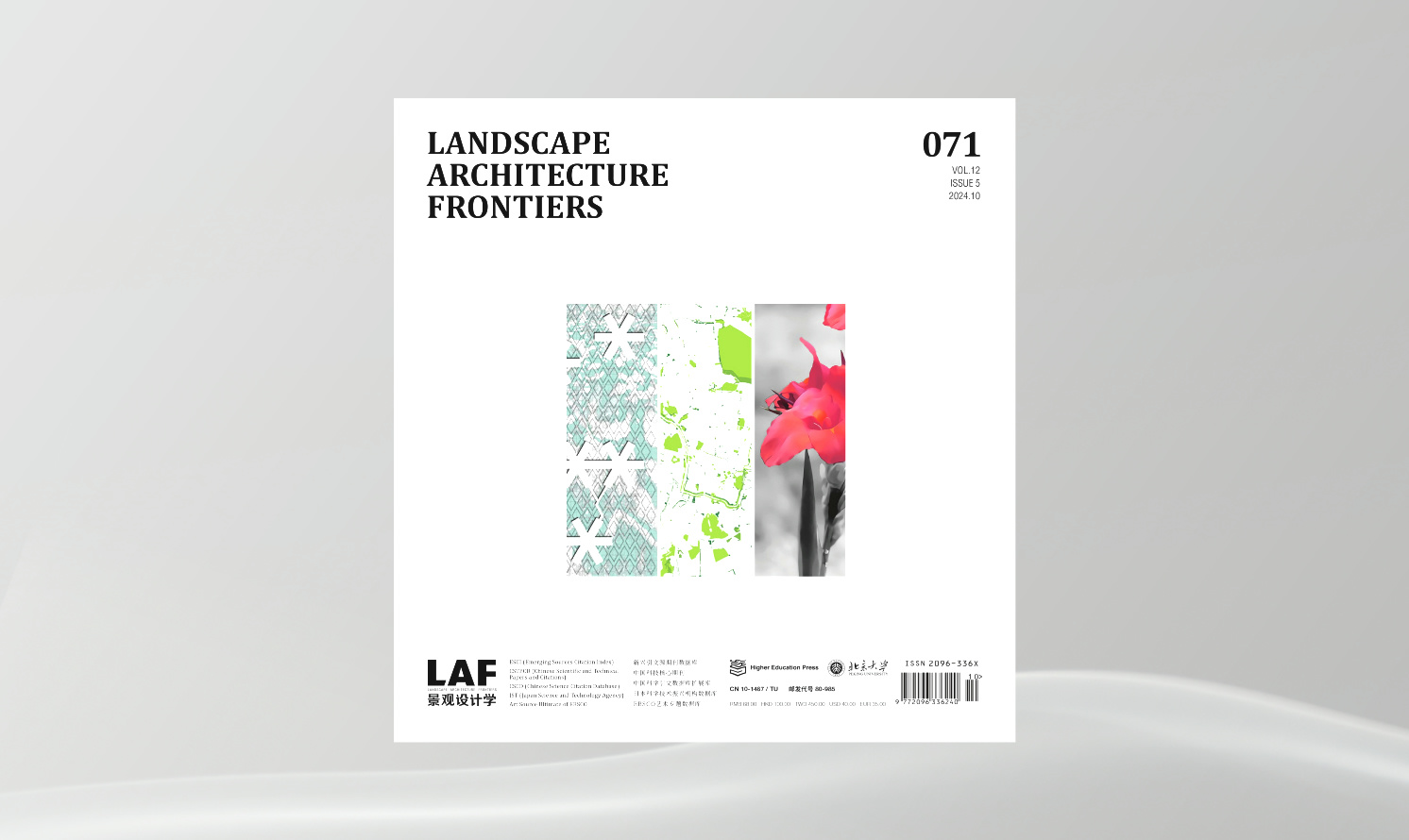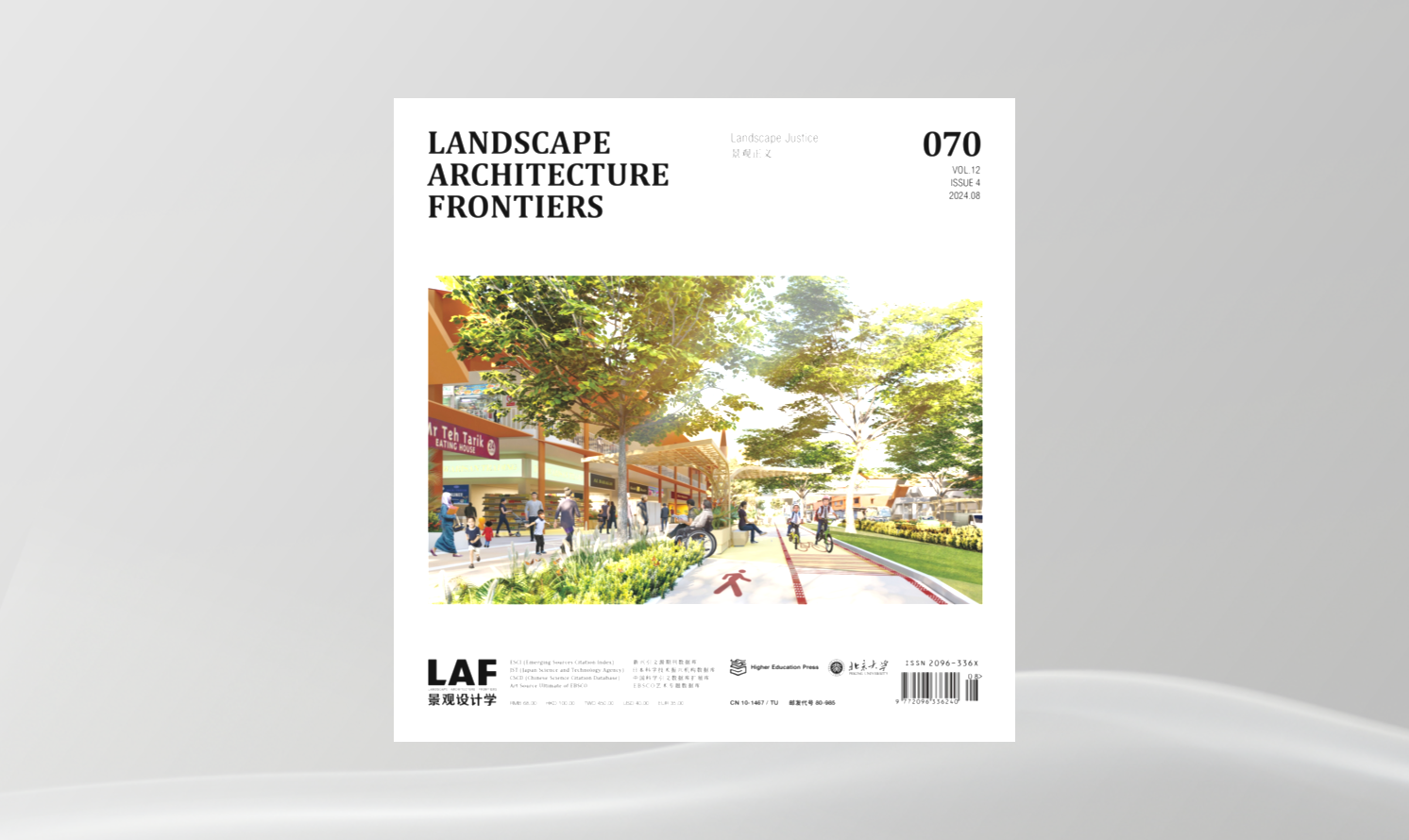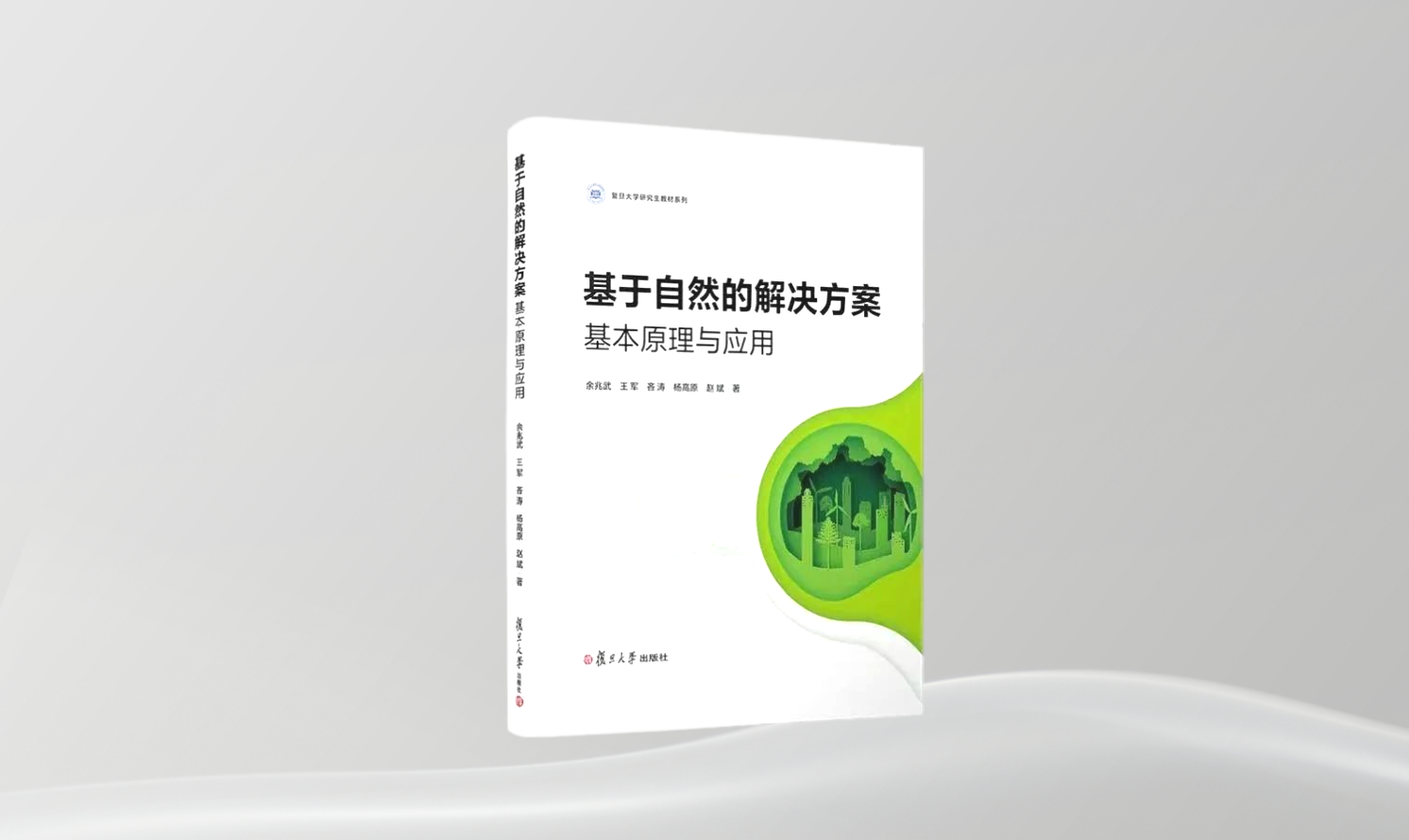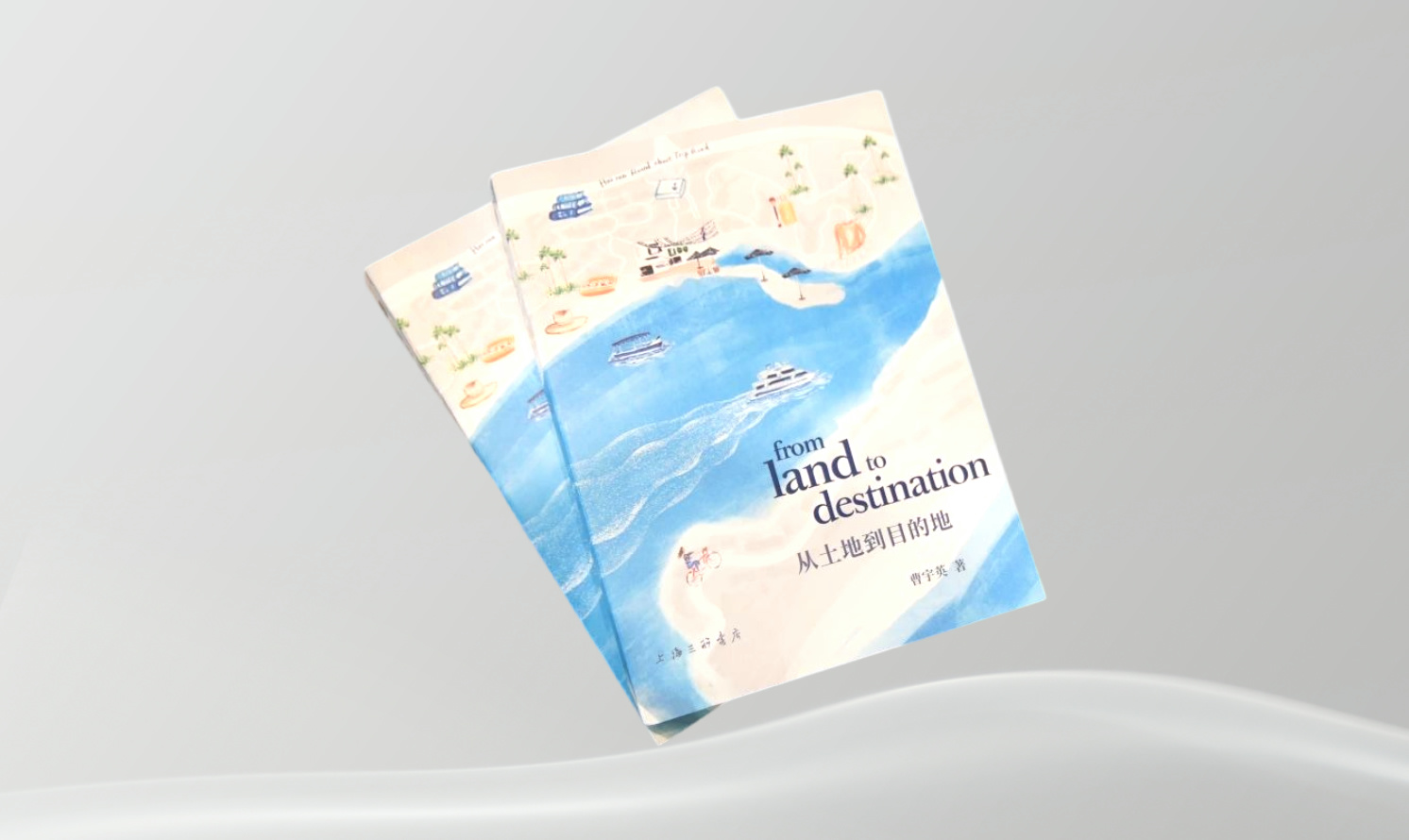德國(guó)景觀(guān)規(guī)劃的價(jià)值邏輯��、法律框架及啟示
Values and Legal Framework of German Landscape Planning and the Implications
作者:羅濤�����,林宇晨���,克里斯蒂娜?馮?哈倫�,王志芳 LUO Tao, LIN Yuchen, Christina von Haaren, WANG Zhifang
摘要
德國(guó)景觀(guān)規(guī)劃被視為國(guó)土空間規(guī)劃管理體系的一個(gè)成功案例��。本文通過(guò)梳理德國(guó)景觀(guān)規(guī)劃的歷史發(fā)展脈絡(luò)��、價(jià)值邏輯及法律框架��,將其實(shí)踐經(jīng)驗(yàn)的基本邏輯總結(jié)為:1)重視在歷史文化傳統(tǒng)中尋找規(guī)劃的倫理依據(jù)���;2)景觀(guān)整體論結(jié)合社會(huì)發(fā)展需求以完善規(guī)劃對(duì)象的界定�����;3)以成本-效益最優(yōu)化為導(dǎo)向制定規(guī)劃措施���;4)基于輔助性原則和景觀(guān)過(guò)程尺度效應(yīng)明確規(guī)劃層級(jí)劃分�����。以上邏輯在德國(guó)景觀(guān)規(guī)劃的法律依據(jù)中得到充分貫徹���,保障了其實(shí)施效率。其后�,本文結(jié)合具體的國(guó)情背景,建議中國(guó)國(guó)土空間規(guī)劃進(jìn)一步推動(dòng)空間資源使用權(quán)�����、收益權(quán)與所有權(quán)的剝離�����,構(gòu)建良性的公私利益博弈與制衡機(jī)制�,提升規(guī)劃的公平性�;在完善國(guó)土空間規(guī)劃技術(shù)標(biāo)準(zhǔn)體系的基礎(chǔ)上,重點(diǎn)強(qiáng)化鄉(xiāng)鎮(zhèn)基層國(guó)土空間規(guī)劃中的公眾參與力度和效率���,構(gòu)建國(guó)土空間規(guī)劃的決策參與機(jī)制����;基于“五級(jí)三類(lèi)”規(guī)劃層級(jí)架構(gòu),在確立上級(jí)規(guī)劃?rùn)?quán)威性�����、保證規(guī)劃效率的同時(shí)�,通過(guò)生態(tài)系統(tǒng)服務(wù)等生態(tài)公共產(chǎn)品的有償供給和補(bǔ)償,構(gòu)建跨層級(jí)和跨區(qū)域的規(guī)劃協(xié)調(diào)機(jī)制��。
關(guān)鍵詞
國(guó)土空間規(guī)劃��;景觀(guān)規(guī)劃��;價(jià)值邏輯���;法律框架����;比較分析�����;德國(guó)
Abstract
German landscape planning has gathered many experiences and become an outstandingly working system of the nation’s territorial spatial planning. By reviewing its history, values, and legal framework, this paper summarizes the experience of German landscape planning and draws conclusions for its success into four logics: 1) the normative basis for the evaluation and deduction of objectives is transparent and stems primarily from ethical and cultural values; 2) social development needs are considered in the overall spatial planning and local participation processes; 3) planning methods include ways to effective implementation; and 4) the principle of subsidiary and the scale effect of landscape processes are considered. These logics are reflected and guaranteed by the German legislation. With a profound understanding of China’s reality, the authors argue that China needs more efforts to further separate the right to use and the revenues from the ownership of the spatial resources, and build a balancing mechanism for public-private interest negotiation to ensure the fairness of planning; In addition to enriching the evaluation standards and methodological standards for territorial spatial planning, a greater attention should be given to enhancing the effectiveness and efficiency of public participation at lower planning levels by establishing respective routines of bottom up initiatives and processes; Within the “Five-Level and Three-Type framework,” China should introduce cross-level and cross-regional planning coordination mechanism that facilitates the paid supply and compensation mechanism of ecological public goods like ecosystem services.
Key words
Territorial Spatial Planning; Landscape Planning; Values; Legal Framework; Comparative Analysis; Germany
安第斯山脈地區(qū)國(guó)土規(guī)劃與(后)礦山開(kāi)采生態(tài)修復(fù)的新范式
New Paradigms of Territorial Planning and (Post-)Mining Ecological Restoration in the Andes
作者:瑪格麗塔?馬薩羅����,布魯諾?德?繆德?tīng)?���,凱利?香農(nóng) Margarita MACERA, Bruno De MEULDER, Kelly SHANNON
摘要
本文認(rèn)為有必要對(duì)拉丁美洲安第斯山脈礦山開(kāi)采的生態(tài)修復(fù)工作建立新的范式�����。文章首先以批判性的視角梳理了礦區(qū)和采礦定居點(diǎn)之間超越地域空間上的聯(lián)系����,并揭示了二者在長(zhǎng)期生態(tài)破壞惡性循環(huán)中的矛盾關(guān)系。該研究聚焦秘魯安第斯山脈波托西���、萬(wàn)卡維利卡����、瓦爾加約克和卡哈馬卡這4個(gè)采礦定居點(diǎn)背后的地域邏輯�����,以及它們從18世紀(jì)至今的發(fā)展歷程���。這4個(gè)定居點(diǎn)成為了當(dāng)?shù)鼐坝^(guān)基礎(chǔ)設(shè)施和水源地資源的一個(gè)延伸網(wǎng)絡(luò),它們都已經(jīng)(并將持續(xù))受到采礦活動(dòng)的明顯干擾�����,遺留下來(lái)的不僅是采礦后的有害生態(tài)環(huán)境,還有不斷產(chǎn)生的酸性開(kāi)采廢水����。呈現(xiàn)在世人眼前的生態(tài)失衡證據(jù)表明,即使停止采礦活動(dòng)����,其影響仍會(huì)延續(xù)數(shù)百年。本文根據(jù)秘魯現(xiàn)有立法�����,反思了當(dāng)前的后礦山開(kāi)采景觀(guān)的修復(fù)實(shí)踐��。最后����,研究呼吁采取新的國(guó)土規(guī)劃方式,并基于更新對(duì)后礦山開(kāi)采景觀(guān)的了解和認(rèn)識(shí)�����,為卡哈馬卡制定綜合性的設(shè)計(jì)策略��。此類(lèi)規(guī)劃需要調(diào)和采礦、環(huán)境工程和生態(tài)自可持續(xù)性等之間的沖突��,而謀略性的設(shè)計(jì)研究將為其提供重要支持�����。
關(guān)鍵詞
景觀(guān)設(shè)計(jì)���;后礦山開(kāi)采景觀(guān)�;生態(tài)修復(fù)��;安第斯山脈����;瓦爾加約克;卡哈馬卡
Abstract
The paper argues for the necessity of a new paradigm of ecological restoration in the face of mining extraction in the Latin American Andes. It begins with a critical reading of the extra-territorial connections between mining sites and settlements and unfolds their ambivalent relations through chronic cycles of ecological destruction. The analysis focuses on the territorial logics embedded in four mining-settlements of the Peruvian Andes and their development from the eighteenth to the twenty-first century. Potosí, Huancavelica, Hualgayoc, and Cajamarca form part of an extended network of landscape infrastructures and headwater resources, all of which have been (and continue to be) significantly disturbed through mining operations. The sites have inherited a relentless production of Acid Mine Drainage in addition to other hazardous post-mining ecologies. Tangible evidence of ecological misbalance demonstrates the enduring impact of past-mining activities even centuries after mineral extraction has ceased. The paper reflects on present-day practices of post-mining landscape restoration in accordance with current Peruvian legislation. It concludes with a plea for a new form of territorial planning as well as both the conception and perception of post-mining landscapes through inclusion of design strategies for Cajamarca. Such planning needs to reconcile the contradictory elements of mineral extraction, environmental engineering, and self-sustainable ecological development. Intelligent design research is a major support for such an endeavor.
Key words
Landscape Design; Post-Mining Landscapes; Ecological Restoration; Andes; Hualgayoc; Cajamarca
國(guó)土空間規(guī)劃體系中控制性規(guī)劃的生態(tài)拓展——以北京市門(mén)頭溝區(qū)為例
Ecological Extension of Regulatory Planning in China’s Territorial Spatial Planning System: A Case Study on Mentougou District, Beijing
作者:陳學(xué)璐��,李崛�����,許立言 CHEN Xuelu, LI Jue, XU Liyan
摘要
中國(guó)的國(guó)土空間規(guī)劃體制改革是對(duì)整個(gè)規(guī)劃體系的深刻變革���。作為規(guī)劃落地實(shí)施的重要環(huán)節(jié)�,控制性詳細(xì)規(guī)劃在編制方法和指標(biāo)體系的科學(xué)性�����、與上位和其他專(zhuān)項(xiàng)規(guī)劃的協(xié)調(diào)性��、規(guī)劃的可操作性等方面都有待提升�,尤其是國(guó)土空間用途管制與生態(tài)修復(fù)領(lǐng)域仍然存在諸多亟需彌補(bǔ)的短板。本研究提出基于生態(tài)安全格局理論的控制性規(guī)劃的生態(tài)拓展方法�,并以北京市門(mén)頭溝區(qū)為例,重點(diǎn)從分區(qū)管制依據(jù)���、地塊用地控制管理等方面論述其實(shí)現(xiàn)方法與路徑�����。本文提出采用建設(shè)-生態(tài)權(quán)衡機(jī)制對(duì)生態(tài)安全與建設(shè)活動(dòng)進(jìn)行沖突分析��,以修正生態(tài)控制分區(qū)并建立相應(yīng)導(dǎo)則與管控指標(biāo)體系����,從而形成一套基于生態(tài)拓展的完整的控制性規(guī)劃編制方法�,以期滿(mǎn)足生態(tài)文明時(shí)代國(guó)土空間規(guī)劃落地實(shí)施與精準(zhǔn)管控的需求。
關(guān)鍵詞
國(guó)土空間規(guī)劃;控制性規(guī)劃�����;生態(tài)拓展��;分區(qū)用途管制�����;街區(qū)控制管理����;生態(tài)過(guò)程回溯
Abstract
The current reform of China’s territorial spatial planning system is with profound expectation. Key to the implementation of spatial plans, regulatory detailed planning needs an improvement in preparation methods, indicator systems, coordination, and feasibility, etc. More work is urgently needed to make up the deficiencies of land use regulation and ecological restoration of territorial spaces. This paper devises methods for the ecological extension of regulatory planning with the theory of ecological security pattern. With Mentougou District in Beijing as a case study, this paper demonstrates the methods and roadmaps for ecological extension through land use control and community control and management. By analyzing the conflicts of ecological security and construction activities with a balancing mechanism, this study improves ecological control zoning and formulates regulatory principles and indicators. A thoughtful paradigm of preparation methods for the ecological extension of regulatory planning thus comes into being, which would offer references for the implementation and precise regulation of territorial spatial planning in China’s era of Ecological Civilization.
Key words
Territorial Spatial Planning; Regulatory Planning; Ecological Extension; Land Use Control; Community Control and Management; Ecological Process Traceback
水適應(yīng)性景觀(guān)認(rèn)知與研究框架解析——以北京市門(mén)頭溝地區(qū)為例
Cognition and Research Framework of Water Adaptive Landscapes with the Case Study on Mentougou District, Beijing
作者:張晉 ZHANG Jin
摘要
水適應(yīng)性景觀(guān)是人-水相互適應(yīng)結(jié)果下的典型地域景觀(guān)綜合體。對(duì)于水適應(yīng)性景觀(guān)的研究強(qiáng)調(diào)水��、適應(yīng)性�、景觀(guān)三者之間研究視角及研究方法的結(jié)合,可看作是全球變化背景下的適應(yīng)性專(zhuān)項(xiàng)研究���。本文首先梳理了“適應(yīng)性”在各相關(guān)學(xué)科中的概念�,在總結(jié)適應(yīng)性研究主要屬性的基礎(chǔ)上提出了水適應(yīng)性景觀(guān)的概念和研究范疇����,認(rèn)為水適應(yīng)性景觀(guān)的研究對(duì)象主要包括相關(guān)空間形態(tài)及行為模式的適應(yīng)性過(guò)程�����、能力及策略���。隨后從空間格局及營(yíng)造經(jīng)驗(yàn)����、評(píng)估分析、敘事分析等三方面概括了水適應(yīng)性景觀(guān)研究的進(jìn)展��,并以北京市門(mén)頭溝地區(qū)為例�,構(gòu)建水適應(yīng)性景觀(guān)研究框架并進(jìn)行解析;最后從研究框架��、量化方法����、公眾認(rèn)知、落地性等方面對(duì)未來(lái)研究提出展望��。
關(guān)鍵詞
水適應(yīng)性景觀(guān)����;水�;適應(yīng)性���;景觀(guān)����;認(rèn)知���;研究框架����;門(mén)頭溝
Abstract
Water adaptive landscape is a typical regional complex formed by mutual adaptation between humans and water systems. As a subfield of adaptation research in the context of global changes, research on water adaptive landscapes emphasizes the combination of research perspectives and methods on water, adaptation, and landscape. This paper first reviews the concepts of “adaptation” in related disciplines, summarizes the primary attributes of adaptation, and puts forward a definition and research scope of water adaptive landscape. While pointing out that research on water adaptive landscapes mainly studies the processes, capacities, and strategies of relevant spatial forms and behavioral patterns, it also presents the research progress and achievements in the experience of spatial patterns and construction, evaluation, and narrative analysis, before proposing a research framework of water adaptive landscape by focusing on Mentougou District of Beijing. Finally, it offers prospects for future study from the aspects of research framework, quantitative methods, social cognition, and feasibility.
Key words
Water Adaptive Landscape; Water; Adaptation; Landscape; Cognition; Research Framework; Mentougou District
聲景方法在景觀(guān)設(shè)計(jì)中的作用
The Roles of Soundscape Approaches in Landscape Design
作者:蒿亦穎�,邵鈺涵 HAO Yiying, SHAO Yuhan
摘要
聲景源于人們對(duì)特定空間需求和期望的感知與理解,是一種非視覺(jué)的觀(guān)察與表達(dá)形式����。與視覺(jué)景觀(guān)類(lèi)似,聲景的成本效益亦有相當(dāng)?shù)奈?���。然而,?duì)于如何將聲景方法融入景觀(guān)設(shè)計(jì)��,目前設(shè)計(jì)師和相關(guān)從業(yè)者尚未有充分的理解和應(yīng)用�。本文主要通過(guò)英國(guó)的相關(guān)研究成果����、國(guó)家政策及最前沿的設(shè)計(jì)實(shí)踐����,探討聲景方法在景觀(guān)設(shè)計(jì)中的作用。盡管相關(guān)的研究尚不充分���,但已有研究證明��,特定景觀(guān)設(shè)計(jì)要素可從聲屏障及積極聲源方面對(duì)聲景的營(yíng)造有所助益。此外���,相應(yīng)政策應(yīng)鼓勵(lì)城鄉(xiāng)地區(qū)保有適宜的聲景并維持其多樣性����,以供景觀(guān)設(shè)計(jì)師針對(duì)噪聲問(wèn)題提出更多創(chuàng)新設(shè)計(jì)方案����。景觀(guān)設(shè)計(jì)方案需要通過(guò)團(tuán)隊(duì)協(xié)作和思維創(chuàng)新來(lái)進(jìn)一步探索行之有效的設(shè)計(jì)方法,而將交通主管部門(mén)和開(kāi)發(fā)商等不同群體的利益考慮在內(nèi)的聲景方法即可實(shí)現(xiàn)這一目標(biāo)�����。在景觀(guān)設(shè)計(jì)師和城市規(guī)劃師的協(xié)助下,協(xié)調(diào)各方利益的設(shè)計(jì)方案可通過(guò)創(chuàng)造理想的城市聲景予以明確�。
關(guān)鍵詞
聲景方法;景觀(guān)設(shè)計(jì)���;聲掩蔽��;感知�;聲環(huán)境
Abstract
Soundscape starts from human’s perception and understanding of users’ needs and expectations of a space in an un-visual observation and expression form. Similar to visual landscape, soundscape cost-benefit can be rather attractive. However, how to integrate soundscape approaches into landscape design has not been sufficiently understood or applied by designers and practitioners. This paper aims to discuss the roles of soundscape approaches in landscape design by exploring the research outcomes, national policies, and the state-of-the-art design practice especially across the UK. The design elements of landscape have been demonstrated to be able to form positive soundscape in terms of both noise barrier and positive sound source, although there is still a lack of research on soundscape approaches in landscape design. Besides, relevant policies should encourage appropriate soundscapes and diversity of soundscapes in both urban and rural areas, which could provide more possibilities for landscape designers to create innovative design solutions for noise problems. The landscape design options need further development through collaboration and innovative thinking so that a greater variety of solutions can be implemented. Soundscape approaches are those which take into account interests of different groups, including transport authorities and developers. Coordinated solutions can be defined with the help of landscape and urban architects to fulfil stakeholders’ interests by creating a desirable urban soundscape.
Key words
Soundscape Approach; Landscape Design; Sound Masking; Perception; Acoustic Environment
國(guó)土空間規(guī)劃體系中景觀(guān)設(shè)計(jì)學(xué)科與行業(yè)的困惑及機(jī)遇
Struggles and Opportunities of the Discipline and Profession of Landscape Architecture in China’s Territorial Spatial Planning Reform
作者:李迪華 LI Dihua
摘要
作者認(rèn)為對(duì)新時(shí)代國(guó)土空間規(guī)劃體系的理解首先應(yīng)建立在對(duì)社會(huì)經(jīng)濟(jì)發(fā)展方式的國(guó)家戰(zhàn)略抉擇的深入解讀之上�,即理解生態(tài)文明建設(shè)的內(nèi)涵與目標(biāo)。國(guó)土空間規(guī)劃是生態(tài)文明建設(shè)的空間途徑���,其本質(zhì)是制定公共政策���,目標(biāo)是協(xié)調(diào)解決迫切的資源約束趨緊、環(huán)境污染嚴(yán)重和生態(tài)系統(tǒng)退化等宏觀(guān)的空間治理問(wèn)題�。隨后,作者進(jìn)一步解析了生態(tài)修復(fù)與國(guó)土空間規(guī)劃體系的關(guān)系�,并指出應(yīng)形成宏觀(guān)-中觀(guān)-微觀(guān)一整套以生態(tài)修復(fù)為目標(biāo)的全生命周期國(guó)土生態(tài)修復(fù)規(guī)劃與實(shí)施體系。與此同時(shí)���,作者肯定了編制跨行政區(qū)域?qū)m?xiàng)規(guī)劃的必要性��,并強(qiáng)調(diào)了跨領(lǐng)域的多專(zhuān)業(yè)合作的重要意義��,同時(shí)建議“雙評(píng)價(jià)”應(yīng)以地方特色為基礎(chǔ)�、按照“一地一策”的原則來(lái)執(zhí)行。最后����,針對(duì)景觀(guān)設(shè)計(jì)學(xué)等相關(guān)學(xué)科和行業(yè)在當(dāng)前國(guó)土空間規(guī)劃體系改革中所面臨的困惑與發(fā)展機(jī)遇,作者從學(xué)科教育和設(shè)計(jì)師自身知識(shí)與能力的轉(zhuǎn)型方面提出了建議�。
關(guān)鍵詞
國(guó)土空間規(guī)劃;景觀(guān)設(shè)計(jì)����;風(fēng)景園林;生態(tài)文明建設(shè)��;生態(tài)修復(fù)��;設(shè)計(jì)教育
Abstract
A true understanding of Ecological Civilization Construction is key to comprehend the connotation and goals of China’s territorial spatial planning, which echoes the ideological keynote of the country’s upgrade of socio-economic development mode. Missioned as a means to public policy making, territorial spatial planning develops roadmaps for Ecological Civilization Construction by addressing macro spatial governance problems such as the shortage of resources, severe environmental pollution, and ecosystem degradation. Furthermore, the author interprets the relationship between ecological restoration and territorial spatial planning system, and argues that the territorial spatial planning system should employ a macro-medium-micro hierarchy in scale while focusing on life-circle ecological restoration planning and implementation. In addition to the necessity of developing cross-administrative border plans, the author emphasizes the importance of multi-disciplinary cooperation. Then, he points out that “The Two Assessment Standards” should value regional characteristics and avoid to indiscriminately apply planning and design patterns in different cases. Finally, the author puts forward suggestions to practitioners in Landscape Architecture and other allied professions to prepare themselves by self-retraining with new concepts, methodologies, and technologies to be more competent for the contemporary needs of territorial spatial planning.
Key words
Territorial Spatial Planning; Landscape Design; Landscape Architecture; Ecological Civilization Construction; Ecological Restoration; Design Education
區(qū)域設(shè)計(jì)在中國(guó)國(guó)土空間規(guī)劃中的定位:長(zhǎng)江三角洲巨型城市區(qū)的項(xiàng)目探索
Positioning Regional Design in Chinese Territorial spatial Planning: An Exploratory Project in the Yangtze River Delta Megacity Region
作者:克里斯蒂安?諾爾夫���,謝雨婷 Christian NOLF, XIE Yuting
摘要
2018年,中國(guó)成立自然資源部���,新部門(mén)旨在重新構(gòu)建規(guī)劃體系���,統(tǒng)一行使國(guó)土資源和水資源管理�����、環(huán)境保護(hù)��、農(nóng)業(yè)和空間規(guī)劃等職責(zé)��,以打破原有各部門(mén)之間缺乏協(xié)作的壁壘��,徹底改變以往不統(tǒng)一����、相互矛盾的規(guī)劃模式�。然而在現(xiàn)階段,既有的規(guī)劃工具仍然與行政邊界緊密關(guān)聯(lián)�����,以法定性��、控制性規(guī)劃為主����,尚不足以支撐跨越不同行政實(shí)體的復(fù)雜而動(dòng)態(tài)的巨型城市區(qū)規(guī)劃。長(zhǎng)江三角洲巨型城市區(qū)的構(gòu)建是長(zhǎng)三角區(qū)域一體化發(fā)展規(guī)劃的核心,該規(guī)劃側(cè)重于推動(dòng)經(jīng)濟(jì)協(xié)作和提升城市服務(wù)�����,但在國(guó)土尺度仍未形成一致的區(qū)域空間發(fā)展愿景����。本文介紹了由高校主導(dǎo)、設(shè)計(jì)驅(qū)動(dòng)的“江南公園”研究項(xiàng)目��,聚焦于滬蘇杭三地之間廣闊的三角洲平原��。以區(qū)域“公園”概念為隱喻,項(xiàng)目結(jié)合新興的區(qū)域設(shè)計(jì)方法,利用圖繪����、可視化����、設(shè)計(jì)策略和設(shè)計(jì)工作坊等工具���,為這一歷史悠久的生態(tài)敏感地區(qū)擬定了發(fā)展的愿景。作為區(qū)域設(shè)計(jì)在中國(guó)的實(shí)驗(yàn)性案例����,項(xiàng)目例證了在復(fù)雜的巨型城市區(qū)���,如何運(yùn)用跨尺度、跨部門(mén)的協(xié)作方法來(lái)引導(dǎo)整合性空間策略的制定�����。
關(guān)鍵詞
區(qū)域設(shè)計(jì)�;國(guó)土空間規(guī)劃;協(xié)同設(shè)計(jì)�����;江南公園��;長(zhǎng)江三角洲��;巨型城市區(qū)
Abstract
By restructuring its planning system and integrating competences of land resource and water management, environmental conservation, agriculture, as well as spatial planning, under a same Ministry of Natural Resources in 2018, China ambitioned to definitively turn the page on inconsistent and sectoral planning practices. However, existing planning instruments are still linked to administrative boundaries and remain statutory and regulatory in nature, which makes them inadequate to address complex and dynamic megacity regions that span across different administrative entities. The Yangtze River Delta megacity region is the subject of an ambitious integration plan which focuses on economic coordination and urban services, however, there is still no coherent vision on its spatial development at the territorial scale. This article presents the “Jiangnan Park,” a university-led and design-driven research project focusing on the vast triangular plain between cities of Shanghai, Hangzhou, and Suzhou. Using the encompassing metaphor of regional “park” and applying the emerging method of regional design, this project combines mapping, visualization, design strategies, and workshop techniques to elaborate a development vision for this historically and ecologically sensitive area. As a pioneering case of regional design in China, this project exemplifies how the use of cross-scale and cross-sectoral collaborative methods can inform the development of integrative strategies for complex megacity regions.
Key words
Regional Design; Territorial Spatial Planning; Collaborative Design; Jiangnan Park; Yangtze River Delta; Megacity Region
人工橡膠林的蛻變——西雙版納三達(dá)山熱帶雨林生態(tài)修復(fù)規(guī)劃
The Rebirth of Tropical Rainforest — Ecological Restoration Planning for Sanda Mountain of Xishuangbanna, China
作者:勞炳麗�����,卓偉德��,朱榮遠(yuǎn) LAO Bingli, ZHUO Weide, ZHU Rongyuan
摘要
熱帶雨林是一種獨(dú)特的森林生態(tài)系統(tǒng)�����,是地球上生物多樣性最高的植被類(lèi)型之一,當(dāng)前面臨生物多樣性迅速消失與生態(tài)功能?chē)?yán)重退化等問(wèn)題���。在中國(guó)西雙版納熱帶雨林中����,三達(dá)山是整體生態(tài)格局的重要節(jié)點(diǎn)����,但農(nóng)業(yè)生產(chǎn)與人工橡膠林的大量種植使當(dāng)?shù)氐纳鷳B(tài)系統(tǒng)日漸破碎,植被生產(chǎn)力也大幅下降���。自2017年起����,項(xiàng)目團(tuán)隊(duì)根據(jù)三達(dá)山現(xiàn)狀生境條件��,以30年為修復(fù)周期�����,采用從局部修復(fù)�、斑塊修復(fù)、廊道修復(fù)到生態(tài)完善的動(dòng)態(tài)演替總體思路����,借助建群種植物、先鋒植物���、立體復(fù)合型和協(xié)助自然再生4種修復(fù)方法重建三達(dá)山受損的熱帶雨林生態(tài)系統(tǒng)���;并利用InVEST模型對(duì)修復(fù)前后的碳儲(chǔ)量變化、生境質(zhì)量和生態(tài)系統(tǒng)服務(wù)功能價(jià)值展開(kāi)評(píng)估�,以動(dòng)態(tài)指導(dǎo)和修正修復(fù)計(jì)劃,逐步實(shí)現(xiàn)熱帶雨林的回歸��。該項(xiàng)目是復(fù)雜而漫長(zhǎng)的熱帶雨林修復(fù)實(shí)踐的一次實(shí)驗(yàn)性探索�,可為中國(guó)乃至全球熱帶雨林生態(tài)修復(fù)提供研究與實(shí)踐基礎(chǔ)。
關(guān)鍵詞
熱帶雨林��;生態(tài)修復(fù)規(guī)劃�����;修復(fù)方式���;效益評(píng)估����;西雙版納
Abstract
Tropical rainforest, a unique forest ecosystem with the richest biodiversity on the earth, is now suffering from rapid biodiversity loss and ecological degradation. Xishuangbanna is such a typical example in China, where the ecosystem of Sanda Mountain is fragmented by agricultural practices and rubber plantation, and the vegetation productivity decreases sharply, threatening its role in the regional ecological security pattern. For an overall ecological improvement of the study area, since 2017, the project team has examined the existing habitat conditions in Sanda Mountain and proposed a thirty-year planning scheme for the ecological restoration by introducing constructive and pioneer plant species, employing a mixed-species planting mode, and facilitating the natural regeneration of vegetation community to recover natural succession through ecological restoration planning at patch-, corridor-, and regional-scales. The team simulated the changes in carbon storage, habitat quality, and ecosystem service value before and after planning via the InVEST model to guide the dynamic adjustment of the tropical rainforest restoration. This exploratory ecological restoration planning for such a large-scale tropical rainforest may provide research and practical references for other studies in China and abroad.
Key words
Tropical Rainforest; Ecological Restoration Planning; Restoration Methods; Benefit Assessment; Xishuangbanna
邊境棕地:后工業(yè)及后沖突棕地景觀(guān)
Brownfield Borders: Post-Industrial and Post-Conflicting Brownfield Landscapes
作者:尼爾?科克伍德 Niall KIRKWOOD
摘要
朝韓邊境的非軍事區(qū)(DMZ)是當(dāng)今世界危險(xiǎn)系數(shù)極高和防御工事極強(qiáng)的區(qū)域。過(guò)去70年間���,軍隊(duì)與軍用設(shè)施持續(xù)而密集的駐扎��、大量軍事防御設(shè)施及經(jīng)年累月的軍事污染�����,在分裂的朝鮮半島上形成了一連串的棕地�。未來(lái)���,朝韓有望實(shí)現(xiàn)政治與社會(huì)統(tǒng)一�,這意味著將來(lái)有關(guān)半島統(tǒng)一后的所有景觀(guān)問(wèn)題都需要在朝韓非軍事區(qū)內(nèi)解決��。相關(guān)工作包括對(duì)區(qū)域內(nèi)的陸地���、水體以及現(xiàn)存軍事基礎(chǔ)設(shè)施和廢棄設(shè)備進(jìn)行詳細(xì)分析���;土壤修復(fù)、地下水與排水系統(tǒng)修復(fù)以及棕地再利用問(wèn)題����;新型制造業(yè)的引入��、地區(qū)旅游業(yè)的發(fā)展,以及傳統(tǒng)或新型能源的開(kāi)發(fā)等�。朝韓非軍事區(qū)棕地可以視作傳統(tǒng)后工業(yè)棕地(通常位于城市或城市邊緣、以棕地再生方法與慣用手法進(jìn)行處置)的一種極端情況�����。甚或說(shuō)�,“邊境棕地”是一種全新棕地類(lèi)型,無(wú)論是場(chǎng)地自身還是場(chǎng)地中的污染及污染治理方法都是非常獨(dú)特的�,需要開(kāi)展持續(xù)的修復(fù)與再利用。本文旨在通過(guò)哈佛大學(xué)研究生設(shè)計(jì)課程對(duì)朝韓非軍事區(qū)中開(kāi)展學(xué)術(shù)研究��,聚焦于朝鮮半島的統(tǒng)一��、作為新型棕地實(shí)踐的邊境景觀(guān)修復(fù)舉措��,以及針對(duì)場(chǎng)地多種可能未來(lái)的規(guī)劃設(shè)計(jì)方案����。
關(guān)鍵詞
邊界;邊境棕地���;修復(fù)技術(shù)�����;軍事防御區(qū)����;軍事棕地;雷區(qū)
Abstract
The Demilitarized Zone (DMZ) landscape between the Democratic People’s Republic of Korea and the Republic of Korea is currently the most dangerous and heavily fortified territory in the world and has produced a series of continuously linked brownfield lands on a divided Korean Peninsula through the continued intense presence of military troops and equipment, a significant amount of defense infrastructure, and pollutant buildup over the last seventy years. The political and social reunification of the two Koreas may occur in the coming years and any work in the future to address the landscape of a unified peninsula would be required to carry out in the DMZ. The work includes a complete characterization of the land area and water bodies and the existing military infrastructure and abandoned equipment, with the proposed remediation of soils, groundwater, and drainage systems as well as the concerns of brownfield land reuse, adding new industrial manufacturing to the area, the increase of tourism into the region, and the development of both traditional and new forms of regional energy generation. The brownfields in the DMZ can be considered an extreme version of the more conventional post-industrial sites that are addressed in other urban or ex-urban venues through the methods and conventions of brownfield regeneration. Or indeed it may become a new type of brownfield site — the “brownfield border” — with its own characterization, on-site pollutants, and methods to address its ongoing remediation and reuse programs. The intention of this paper is to examine the DMZ through a recent academic study carried out through a graduate design studio at Harvard University focused on the outcomes of unification on the Korean peninsula, the remediation of border landscapes as a new type of brownfield practice, and potential planning and design of alternative futures.
Key words
Boundaries; Brownfield Borders; Remediation Technologies; Military Defense Sites; Military Brownfields; Minefields
可塑城市:基于塑料的基礎(chǔ)設(shè)施與氣候適應(yīng)性沿海社區(qū)構(gòu)建
Plasticity: Plastic-Based Infrastructure for Climate-Resilient Coastal Communities
作者:周凱蓉����,費(fèi)德列克?魯伯特 CHOW Khoi Rong (Clara), Federico RUBERTO
摘要
目前,世界上人口超過(guò)百萬(wàn)的城市中有五分之二位于沿海地區(qū)��,而這些地區(qū)的城市化程度正在持續(xù)增高�����。盡管面臨洪水��、臺(tái)風(fēng)和海嘯等諸多威脅��,因其可為各類(lèi)產(chǎn)業(yè)的發(fā)展提供重要資源��,沿海居民點(diǎn)始終是投資熱點(diǎn)區(qū)域���。東南亞市場(chǎng)更是有望在2020年成為全球第五大經(jīng)濟(jì)體�,屆時(shí)必將有更多農(nóng)村人口移居至城市地區(qū),這無(wú)疑會(huì)給東南亞發(fā)展中國(guó)家現(xiàn)有用于固體垃圾處理與回收等的城市基礎(chǔ)設(shè)施帶來(lái)巨大壓力����。
顯然,在當(dāng)今的人類(lèi)世時(shí)代����,人類(lèi)一直掌控著自然���,極大地改變了地球樣貌�����。為了生存���,人們創(chuàng)造出垃圾填埋場(chǎng)、礦山和支離破碎的農(nóng)田���,任由有毒物質(zhì)和塑料垃圾充斥大氣�、堵塞海洋����。不當(dāng)?shù)睦幹么胧?dǎo)致垃圾填埋場(chǎng)管理不善�����,垃圾被雨水?dāng)y卷入河���,威脅著當(dāng)?shù)丨h(huán)境和依靠這些河流生活的社區(qū)居民(他們通常都是弱勢(shì)群體)。此項(xiàng)目希望通過(guò)研究塑料特征�,在構(gòu)想一個(gè)可以緩解河流塑料垃圾堆積的“機(jī)械景觀(guān)”的同時(shí),創(chuàng)建出可適應(yīng)全球變暖�����、海平面上升等環(huán)境條件變化的探索性基礎(chǔ)設(shè)施網(wǎng)絡(luò)�。
關(guān)鍵詞
城市基礎(chǔ)設(shè)施;海平面上升����;國(guó)土;塑料�����;社區(qū);馬尼拉
Abstract
Many of the world’s coasts are becoming increasingly urbanized, with two-fifths of cities with populations of millions located near coastlines. Coastal settlements have always been attractive due to the provision of critical inputs to industries, despite the many threats — floods, typhoons, tsunamis, etc. With the Southeast Asian market expected to become the fifth largest economy by 2020, migration from rural to urban areas is set to increase, putting a strain on existing infrastructures within the cities, one of which is the solid waste disposal and recycling infrastructure within the developing nations in Southeast Asia.
Currently in the age of the Anthropocene, it is clear that human has greatly reshaped the Earth, bending nature into the course of human wishes, terraforming the land with landfills, mines, and patchwork agriculture fields, choking the atmosphere with toxic emissions, and cloging the seas with plastic waste. Inadequate waste disposal management has resulted in poorly managed landfills with waste being washed into water during rainy seasons, jeopardizing the environment and local communities (typically the most vulnerable ones) that depend on it. This project hopes to explore the nature of plastics, by envisioning a “mechanic landscape” that manages waste input within rivers whilst creating a speculative infrastructural network that varies with environmental conditions (such as global warming and sea-level rise).
Key words
City Infrastructure; Sea-Level Rise; Territory; Plastic; Community; Manila
 京公海網(wǎng)安備 110108000058號(hào)
京公海網(wǎng)安備 110108000058號(hào)
